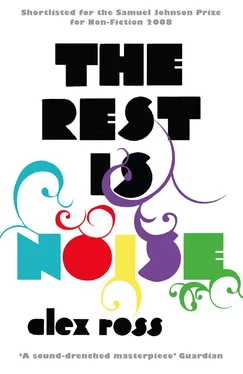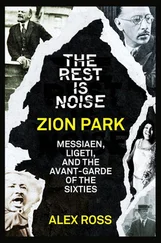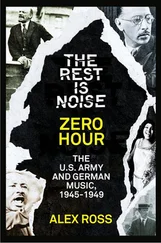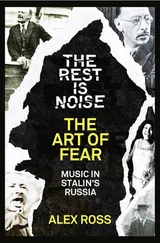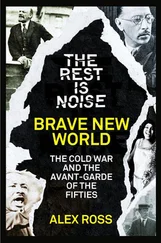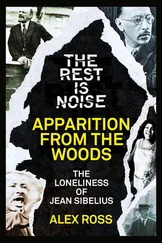There must have been a menacing disconnect between Nijinska’s dances of modern narcissism and Poulenc’s aggressively antique genre pieces. Things go musically out of joint right at the start: first come two Stravinskyish signals, with jagged grace notes like catches in the voice; then a clear major third in clarinets and bassoons; and finally the cartwheeling main theme. Poulenc would write more substantial scores—he had the richest, most surprising career of any of Les Six—but Les Biches retains its nasty champagne kick after all these years.
Stravinsky reached the apex of his hipness. He wrote manifestos, gave inflammatory interviews (“Defend me, Spaniards, from the Germans, who do not understand and who have never understood music”), took homes on the Côte Basque and the Côte d’Azur, conducted, performed on the piano, met famous people, attended parties. There was a fling with Coco Chanel; there was a long affair with the bohemian émigré Vera Sudeykina, who eventually became his second wife. His premieres were A-list events at which luminaries of art and literature congregated. Joyce and Proust had their only meeting at a dinner following the 1922 debut of Renard, although they had trouble finding anything to talk about. Stravinsky’s life took on a name-dropping Andy Warhol quality, as is evident in the questions that Robert Craft asked in the first of his “conversation books” with the composer:
You were a friend of D’Annunzio’s at one time, weren’t you? … You knew Rodin, didn’t you? … Wasn’t there also a question of Modigliani doing a portrait of you? … I once heard you describe your meeting Claude Monet … You were with Mayakovsky very often on his famous Paris trip of 1922? … Would you describe your last meeting with Proust? … I often hear you speak of your admiration for Ortega y Gasset. Did you know him well? … How did Giacometti come to make his drawings of you?
The after-party for Les Noces took place on a barge in the Seine. Stravinsky jumped through a wreath, Picasso created a sculpture out of children’s toys, and Cocteau went around in a captain’s uniform saying, “We’re sinking.”
All the while, Stravinsky was writing rather little music. His output of major works from 1921 to 1925 consisted of the brief opera Mavra, the Octet, the Concerto for Piano and Winds, the Sonata for piano, and the Serenade for piano—less than ninety minutes in total. The composer seemed to spend as much time explaining his music as he did writing it, and amused himself by adopting the flat-toned, in-expressive jargon of a researcher defending his experiments to fellow experts:
My Octuor is a musical object. This object has a form and that form is influenced by the musical matter with which it is composed … My Octuor is not an “emotive” work but a musical composition based on objective elements which are sufficient in themselves … My Octuor, as I said before, is an object that has its own form. Like all other objects it has weight and occupies a place in space …
Stravinsky further claimed that he had never done anything but create “objects” of this kind. “Even in the early days, in the ‘Fire Bird,’” he told an English interviewer in 1921, “I was concerned with a purely musical construction.” Some years later he declared, “I consider music by its very nature powerless to express anything: a feeling, an attitude, a psychological state, a natural phenomenon, etc.” This chic formalism echoed Cocteau (“Dance must express nothing”), who probably got it from Oscar Wilde (“Art never expresses anything but itself”). The new objectivity was the old aestheticism.
Stravinsky had cast aside his old Russian self but had not yet hammered out a new identity. On the one hand, much of his writing in the twenties fell under the rubric of “period modernism.” Mavra is a love letter to nineteenth-century Russian imperial style, especially Tchaikovsky. The Octet bustles through the antiquated arts of sonata form, theme and variation, and modulation through the major and minor keys. The becalmed slow movement of the Piano Concerto unfurls like an aria by Bach or Handel, replete with long, cantabile lines and stately, processional rhythms. Period modernism in music would come to be called neoclassicism, and it would hold sway well into the second half of the century. One early adherent was Manuel de Falla, who set aside his pursuit of flamenco in order to write a Harpsichord Concerto that equaled anything by Stravinsky in severity of method and austerity of tone.
Yet Stravinsky did not neglect the modern world. Better than almost any composer of his time, he understood how the radio, the gramophone, the player piano, and other media would transform music. When he first heard a pianola, in London in 1914, he was entranced by the thought that he could eliminate the unreliability inherent in human performers. Later, in Paris, he signed a contract with the Pleyel player-piano company to record his works, and for a time he even worked out of a studio in the Pleyel factory. He also tailored a few of his works to the needs of the gramophone. During his first visit to New York, in 1925, he recorded some short piano pieces at the Brunswick Records studio, where, the following year, Duke Ellington would set down “East St. Louis Toodle-oo.” Each movement of the Serenade in A fit on one side of a disc. One advantage of the neo-Baroque aesthetic was that its churning ostinatos and arpeggios readily suggested machines in action. For Stravinsky, as for many other composers, technology became a new kind of folklore, another infusion of the real.
The Politics of Style
In 1919, at the Peace Conference in Paris, Woodrow Wilson gave voice to the dream of a League of Nations—a harmonious new world order of “open covenants openly arrived at.” One year later, at a festival of Gustav Mahler’s music in Amsterdam, an international group of composers issued a manifesto welcoming the opportunity “to shake the hands of our brethren in art, irrespective of nationality and race,” and “to rebuild the broken spiritual bridges between the peoples.” To this end, they hoped for “a great international festival or congress of music … at which every musical nation of the world may present its last and best contributions to the art, and at which the workers in musical aesthetics and criticism may exchange their thoughts and the results of their studies.” The idea of a musical League came to life two years later, with the formation of the International Society for Contemporary Music, or ISCM. The ISCM’s festivals—in Salzburg in 1923, Salzburg and Prague in 1924, Prague and Venice in 1925, Zurich in 1926, and Frankfurt in 1927—were integral to music in the twenties, and the organization still exists today.
The postwar spirit of comity led to some odd alliances, none odder than the one that flourished briefly between Les Six and the Second Viennese School. “Arnold Schönberg, the six musicians hail you!” wrote Cocteau in 1920. Milhaud conducted part of Pierrot lunaire in December 1921, and presented the entire piece three times during the following year. Schoenberg, for his part, placed works by Debussy and Ravel on his series of “Private Musical Performances” in Vienna. When the two groups met face to face, Schoenberg called Milhaud “a nice person,” while Poulenc pronounced Webern “an exquisite boy.” As might be expected, this strained exchange of pleasantries didn’t last. By the middle of the de cade the ISCM was beginning to divide into opposing camps, one arrayed around Schoenberg and another around Stravinsky. The old Franco-German musical war resumed.
The twenties were years of runaway inflation, rampant stock speculation, and instant fortunes. The historian Eric Hobsbawm, in his book The Age of Extremes, writes that the economic boom was largely illusory, underwritten by a shaky network of international loans and undermined by widespread unemployment. Music, too, seemed trapped in a bubble economy; a composer could make his name with one or two attention-getting gestures but had a harder time sustaining a career. Publicity was guaranteed for any work that combined classical means with modern themes. Honegger proved adept at this trick, writing pieces titled Rugby, Skating-Rink, and the much-played Pacific 231 (a steam locomotive with two front axles, three main axles, and one axle in the back). The young Czech composer Bohuslav Martinů produced works depicting a football match (Half-Time), crowds celebrating Lindbergh’s flight (La Bagarre), jazz-dancing kitchen utensils (La Revue de cuisine), Satan as a Negro Cyclist (The Tears of the Knife), and a ballet about music itself (Revolt), in which classical music fights dance hits, gramophones rebel against their masters, critics commit suicide, Stravinsky escapes to a desert island, and a Moravian folk song saves the day.
Читать дальше
